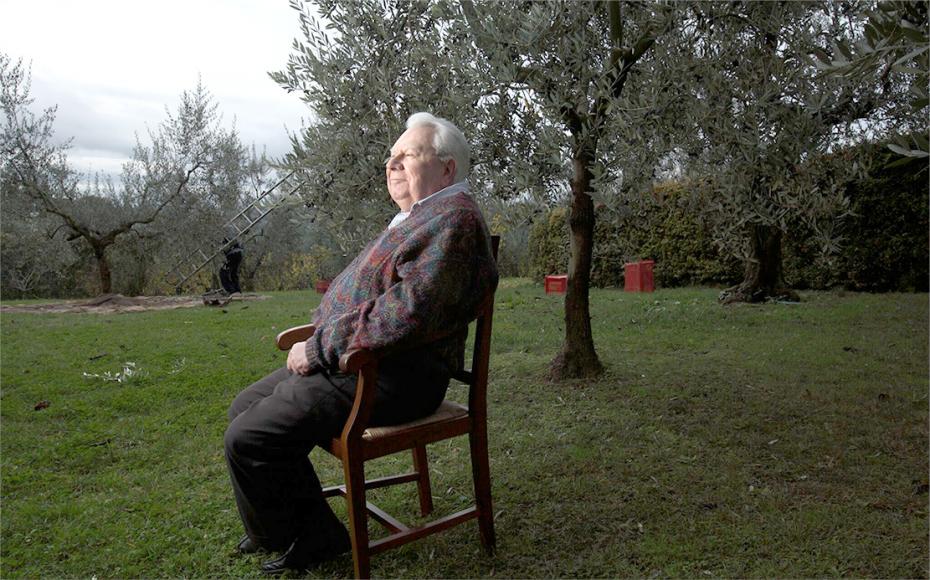On Saturday February 6th, 2016 the Italian wine world lost a legend. Giacomo Tachis, a legendary enologist and consultant to many Italian wineries throughout Italy, passed away in his hometown of San Casciano in the Val di Pesa of Tuscany at the age of 82 years old. Throughout his life he advised, produced, and in same cases co-owned, many Italian wineries providing the keys to winemaking success.
Giacomo was born in Piedmont in 1933. He graduated from the Enological School of Alba in Piedmont. He worked for some local wineries and distilleries in Bologna, but it wasn’t until 1961 when he really kick started his wine career. He began working as a junior oenologist at the San Casciano estate of the Antinori family in Tuscany working with the owner Piero Antinori and his father Niccolò. His aim was to increase the quality of production at the San Casciano estate at a time when Tuscany was flooded with the image of lower quality, high quantity chianti wines. He rose through the ranks and worked with the Antinori family as Wine Director until 1992. Upon leaving there he began consulting with wineries in many other wine regions within Italy.
Giacomo is known as the “father of Italian wine” starting the Italian wine renaissance through his many developments and ideas he introduced to be used in wine production throughout Italy. He changed the way winemaking was thought of including processes of aging wine in oak barriques, which at the time was an uncommon practice. He also shared the process of malolactic fermentation and use of temperature controlled fermentation tanks within the winery. As many winemakers and experts say, winemaking not only takes place in the winery, but in the vineyard itself. There are so many elements that make up what’s known as a “terroir” of an area including the climate, the topography, the soil, etc.. Giacomo also spoke of south facing slopes for growing grapes that obtain the best sunlight and using cordon training for the vines.
What really raised eyebrows is when he introduced the bordeaux grapes of France like merlot, cabernet sauvignon and cabernet franc into winemaking in Italy. The focus had always been on Italy’s native grapes rather than introducing international varietals into their wines. According to an interview in Decanter, Giacomo would travel to Bordeaux meeting with and looking up to Emile Peynaud, an oenologist lecturer, whom helped Giacomo see the potential of blending in bordeaux varietals. And this is what Giacomo took back with him to Tuscany to begin the new revolution of winemaking. All these facets and more are what led him to be named in Decanter magazine as Decanter’s Man of the Year in 2011.
Some of the top wines and most famous in Italy are the effects of Giacomo’s masterpieces including the wine, Tignanello, from the Tenuta San Guido estate in Bolgheri, Tuscany and the wines Solaia and Sassicaia of the Antinori estate, also in Tuscany. At the time, instead of working with the sangiovese grape and others in Tuscany he began to introduce the bordeaux international grapes he learned about from Emile and used them to blend and produce these outstanding wines. Unfortunately, because they didn’t meet Italian laws they were declassified as basic “vino da tavola” wines. As these wines got exposure and praise throughout the world the term Super Tuscans was developed and are now found under the IGT designation of Italian wines, a step up from the vino da tavola designation. The IGT designation was created for those winemakers that wanted to break outside the norm and experiment with grapes such as those that Giacomo introduced.
Outside of Tuscany Giacomo also consulted with wineries on the island of Sardegna including Santadi, a cooperative winery, where he produced the wine Terre Brune and also the Argiolas winery. Giacomo helped to put Sardinian wines on the map that expressed the characteristics of the island through its wine. Wine tells a story and is a very important aspect of winemaking that the winemakers and families of Italy take great pride in and Giacomo was able to show all these characteristics within the glass. He also worked with wineries in other regions of central Italy including Le Marche and the Trentino Alto Adige, located in northeast Italy, working with wineries like Tenuta San Leonardo producing the San Leonardo wine.
Giacomo was able to enjoy his retirement for just six years, although he continued to consult with wineries during that time. Wine was his passion and he dedicated his life to it that carried him through the last days of his life.
For those of you that can read Italian and would love to learn more about this Italian wine icon he wrote an autobiography that you can seek out called “Sapere di Vino”. Today, his daughter, another winemaker in the family, carries on Giacomo’s legend. He is a legend that will never be forgotten for his contribution to Italian wine and for that we are thankful.






























